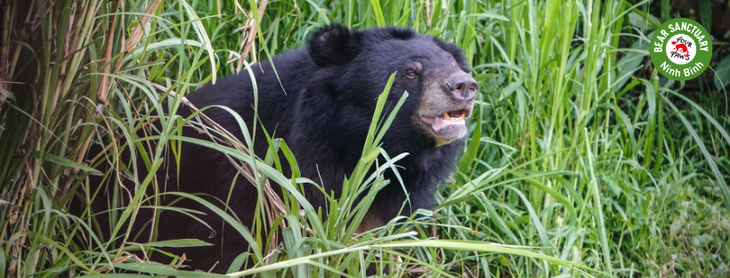(VOVWORLD) - Climate change is having a severe impact on Southeast Asian countries. In particular, a rising sea level is threatening infrastructure and lives in the region. Protecting the region’s biodiversity will mitigate the impact of climate change and benefit all of Southeast Asia.
 Ninh Binh Bear Sanctuary is not only a new home to bears rescued from bile farming and the illegal wildlife trade in Vietnam, but an unforgettable experience for learning and exploring in a natural setting. (Photo credit: bearsanctuary-ninhbinh.org) Ninh Binh Bear Sanctuary is not only a new home to bears rescued from bile farming and the illegal wildlife trade in Vietnam, but an unforgettable experience for learning and exploring in a natural setting. (Photo credit: bearsanctuary-ninhbinh.org) |
Investing in measures to protect the biodiversity of Southeast Asia’s forests and seas could produce benefits worth more than 2.19 trillion USD a year while slowing down climate change, according to a new study published by the Academy of Sciences Malaysia (ASM).
Southeast Asia is one of the most biodiverse regions in the world, boasting the planet’s most extensive and diverse coral reefs and mangrove forests. These are natural treasures of great worth, but they are under threat of imminent destruction. The United Nations warns that ecosystems are degrading and species are becoming extinct at an unprecedented rate.
The ASM study highlights how the loss of biodiversity entails significant economic risk, but insists that there is still time for Southeast Asian nations to embrace biodiversity conservation and invest in natural infrastructure to stimulate job creation and socio-economic growth. To prove the point, the study cites several nature conservation projects in the region.
The Keo Seima Wildlife Sanctuary in eastern Cambodia provides a habitat for more than 40 threatened species, including the Asian Elephant and the Giant Ibis. The Sanctuary has reduced deforestation and cut greenhouse emissions, while boosting the income of the local community by creating 449 new jobs in law enforcement, community patrols, conservation, and eco-tourism.
The Tun Mustapha Marine Park in Malaysia protects more than 250 species of coral and 400 different species of fish and marine mammals whose survival is under threat, including sea turtles and humpback whales. The Park’s popularity with tourists has increased the income of nearby residents.
Other examples include the Ninh Binh Bear Sanctuary in Vietnam, the Tasikoki Wildlife Rescue Center in Indonesia, and the Elephant Conservation Center in Laos.
According to the UN, conservation measures have boosted local economies, increased the incomes of people living in coastal communities, generated jobs, and strengthened food security.